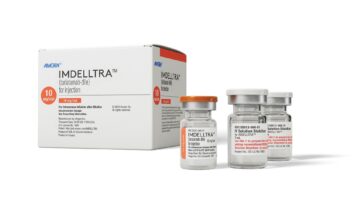The outlook is a whole lot healthier these days at Akron General Health System.
From the three doctors leading Akron General Medical Center to the friendly employees greeting visitors, the once financially troubled health system is operating under a new culture.
In the past six months, Interim Chief Executive Michael Rindler has implemented a new mantra for the health system’s 5,700 employees: Be nice. Work hard. Accommodate.

A Deep-dive Into Specialty Pharma
A specialty drug is a class of prescription medications used to treat complex, chronic or rare medical conditions. Although this classification was originally intended to define the treatment of rare, also termed “orphan” diseases, affecting fewer than 200,000 people in the US, more recently, specialty drugs have emerged as the cornerstone of treatment for chronic and complex diseases such as cancer, autoimmune conditions, diabetes, hepatitis C, and HIV/AIDS.
He has also empowered doctors with a recently created Office of the President, shared by Drs. Jack Mitstifer and Tim Stover.
The two guide the day-to-day operations of the hospital, along with the recently named chief medical officer, Dr. Paula Bauer.
”We have a person here who has empowered physicians to have a significant part of leadership,” Stover said. ”I talk to a lot of docs, and they’re feeling and sensing they’re working in a different environment at Akron General than they worked at a year and a half ago.”
The administrative team, for example, recently approved a new endoscopic procedure to treat severe acid reflux with no-incision surgery through the mouth, said Dr. Daniel Guyton, chairman of the Department of Surgery.

Using Informed Awareness to Transform Care Coordination and Improve the Clinical and Patient Experience
This eBook, in collaboration with Care Logistics, details how hospitals and health systems can facilitate more effective decision-making by operationalizing elevated awareness.
The new procedure was approved within a day after staff surgeons discussed the option with the hospital administration, Guyton said.
”In the past, that would have been months and months and months,” Guyton said. ”It’s really nice to be in a hospital that’s led by physicians. Because of their clinical background, this was almost an intuitive understanding of the advance that this was for patients.
”I think all of us are enthusiastic about the changes that have happened here. I am convinced in my heart of hearts that we are on the right track here.”
The bottom line is benefiting from the changes, Rindler said in a recent interview.
This time last year, Akron General’s operating loss was about $7 million, Rindler said. Today, the medical center’s operating revenue is exceeding expenses by $2.1 million.
”The better you do, the more resources you have, the more you can solicit ideas from physicians,” he said. ”It now is really feeding on itself — the cultural changes and the financial improvement.”
Thanks to its improved financial position, Akron General plans to double the amount it spends next year on capital projects — things such as investments in clinical programs, facility improvements and information technology upgrades.
”The key to making money in any organization, profit or non-profit, is to have those dollars to pump back in,” said F. William Steere, vice chairman of Akron General Health System and former chairman of the medical center board. ”It’s so vital in the health-care world today that we have those dollars. To be able to double our capital expenditures in this short a period of time is indicative of the success of our financial turnaround.”
During recent meetings, Akron General leaders shared these other examples of the turnaround:
– Emergency department visits systemwide are expected to reach 90,300 this year, an increase of about 10,000 from the previous year. The number includes visits to the main ER, as well as Lodi Community Hospital and ERs attached to the Health & Wellness centers in Bath Township and Stow.
– Baby deliveries have increased 7 percent this year compared to last year. Outpatient procedures also have increased.
– The health system’s liquidity — a measure of an institution’s cash flow — has improved about 40 percent to 50 percent from earlier this year.
– Despite the ailing economy and patients facing higher deductibles, surgical volume has remained steady this year, after several years of decline.
– Improvement in bill collection processes yielded about $10 million.
Strong competition
”One of the real benefits to the community from what’s happening is that it’s clear that there are two really good, strong health-care systems here, so people have a choice,” Rindler said, referring to Akron’s two adult hospitals, Akron General and rival Summa Health System.
”We feel that choice is incredibly important to the community. The stronger the two health-care systems are, the more likely it is that people can stay here in town to have their health care, instead of having to travel to Cleveland or other places. I think both systems are strong, both systems have different philosophies.”
Rindler, a health-care consultant from Maine, temporarily took over the helm at Akron General this year after the retirement of former President and Chief Executive Alan J. Bleyer.
At the time, the health system was trying to rebound from financial troubles through revitalization efforts that initially included job cuts.
But much of the subsequent efforts focused on improving revenue, said Richard Fedorovich, board chairman of Akron General Health System.
”Cost containment is important, but you’ll never cut your way to prosperity,” Fedorovich said.
Rindler concentrated on what he calls basic ”blocking and tackling” strategies — things such as improving how the hospital bills and how quickly it gets paid for services.
Speedy payment
Akron General also worked with insurance companies to renegotiate contracts. Its largest private payer, Medical Mutual of Ohio, has been ”an excellent partner” and ”shown great flexibility in working with us to improve the contract, even though they didn’t have to,” Rindler said.
The revitalization efforts have included promoting the hospital’s expanded emergency services at the Health and Wellness locations with a new ”Take Me There” card program and other marketing initiatives.
The hospital now is focusing on moving from ”stable” to ”stellar,” said Bill Babcox, board chairman of Akron General Medical Center.
The goal is to achieve an operating margin of at least 6 percent in the future, Steere said.
In addition, the health system is looking to expand on its success with its popular Health and Wellness centers and satellite ERs with new projects in the eastern and southern part of the county in the next year or two, Fedorovich said.
”We are looking closely at what options and opportunities exist,” he said.
At the same time, the hospital is continuing its national search from among about 250 applicants for a permanent leader.
Even after a new chief executive is selected, Rindler will continue with the health system in a consultant role for about a year, Fedorovich said.
Rindler, an Ohio native, said he welcomes the continued opportunities and challenges at Akron General.
”I really feel like I have been preparing my whole career for this assignment,” said Rindler, who has three decades of industry experience. ”I think it’s going really well.”
Related articles by Zemanta
- Growth at Akron Children’s Hospital goes beyond bricks and mortar (medcitynews.com)












